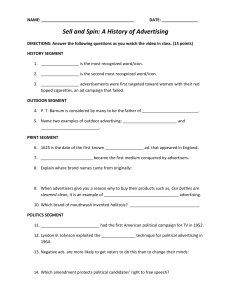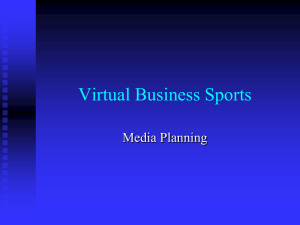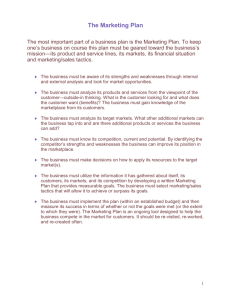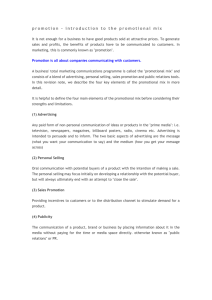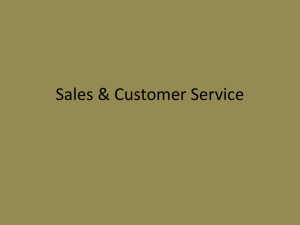Chapter 11
advertisement
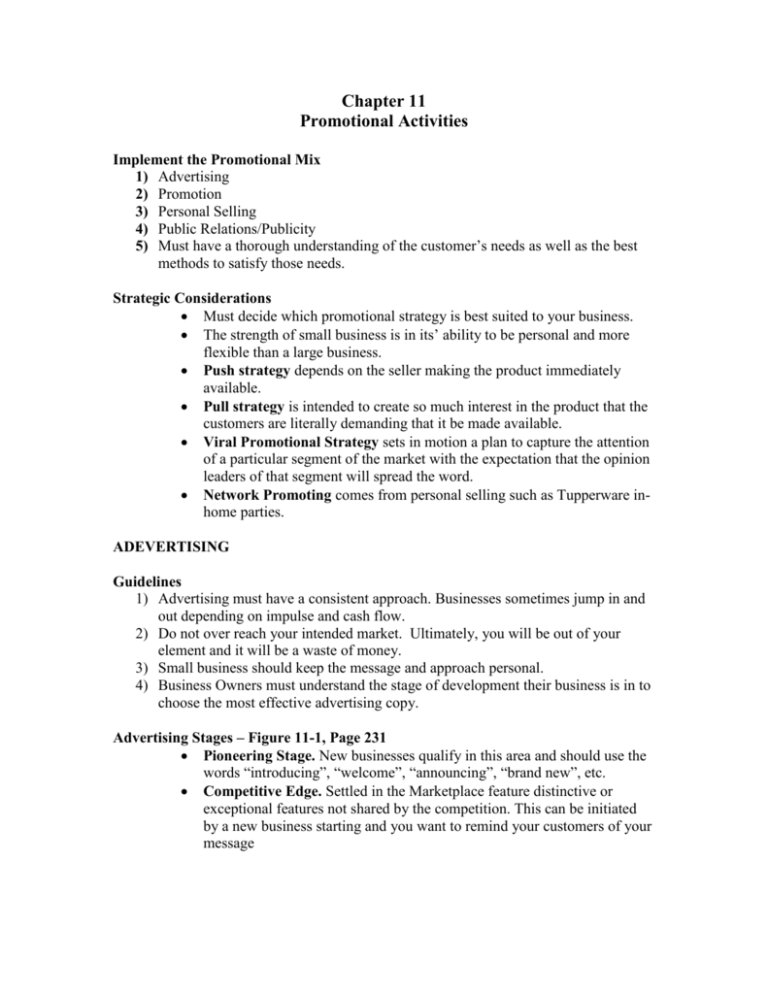
Chapter 11 Promotional Activities Implement the Promotional Mix 1) Advertising 2) Promotion 3) Personal Selling 4) Public Relations/Publicity 5) Must have a thorough understanding of the customer’s needs as well as the best methods to satisfy those needs. Strategic Considerations Must decide which promotional strategy is best suited to your business. The strength of small business is in its’ ability to be personal and more flexible than a large business. Push strategy depends on the seller making the product immediately available. Pull strategy is intended to create so much interest in the product that the customers are literally demanding that it be made available. Viral Promotional Strategy sets in motion a plan to capture the attention of a particular segment of the market with the expectation that the opinion leaders of that segment will spread the word. Network Promoting comes from personal selling such as Tupperware inhome parties. ADEVERTISING Guidelines 1) Advertising must have a consistent approach. Businesses sometimes jump in and out depending on impulse and cash flow. 2) Do not over reach your intended market. Ultimately, you will be out of your element and it will be a waste of money. 3) Small business should keep the message and approach personal. 4) Business Owners must understand the stage of development their business is in to choose the most effective advertising copy. Advertising Stages – Figure 11-1, Page 231 Pioneering Stage. New businesses qualify in this area and should use the words “introducing”, “welcome”, “announcing”, “brand new”, etc. Competitive Edge. Settled in the Marketplace feature distinctive or exceptional features not shared by the competition. This can be initiated by a new business starting and you want to remind your customers of your message Retentive Stage. Firmly established business. Determine to maintain market share by reminding customers of their brands staying power and loyalty. Should be looking for ways to re-enter the Pioneer Stage. Product Advertising. Focused on the benefits and advantages of buying the particular product or services of the business. Institutional Advertising. Broadcasts a good message about the company. Advertising for Small Business Local Newspapers. You can advertise to your market through zone editions. Magazines. Benefit if a longer exposure time to a very specific market segment. Radio. Attempt to advertise at a time that most of segment may be listening. Television. Aired in a channel that has similar demographics to your market segment. Has become more feasible/cost because cable companies do the production and air the commercial in the best available time and channel for your product. Billboard Advertising. Rates are based by the exposure rates of passing traffic. This is beginning to be a powerful tool. Telephone Directories. Indispensable convenience tool for customers. This is costly for larger advertisements and you will have to wait up to one year to enter this area or make a change. Direct Mail. Printed information sent through the mail or electronic mail to potential customers. This is efficient and cost effective. Strategies. Allows for personal communication which is the strength of small business. Requires high quality paper, photography, graphics and overall presentation. Mailing Lists. Can be tailored for the intended market. The costs of mailing pieces can be significant. Telecommunications Advertising. Internet advertising and pop-ups. Not personal and can be considered annoying. Create Copy. The entrepreneur is able to promote the image of the business as well as the product/service. AIDA- Attention, interest, desire, and action. KISS- Keep it simple stupid. Ask the customer to do something, create a thought process or decision process. Evaluate Advertising Results. Look at the benefits of image enhancement and customer exposure over the long term. A business that spends money on a consistent advertising budget should see steady growth. Over a year it should pass the industry growth standard. The more times people are exposed to an ad, the more likely those in the target market are to remember it. Stage a Promotional Event A planned program created to build goodwill for business by offering an added value to the customer. It should be fun for the customer and the business. Small Business should work from a calendar which helps with budgeting and highlighting certain sales period. Small business should be socially orientated. People should enjoy visiting the store. Dynamics of Personal Selling Retailing. Easiest because the customer comes to the business. Encourage browsing and purchasing. Cold Calling. The most difficult because they are made without prior notice to the potential customer. Telemarketing. Requires interacting with customers by telephone by using cold calling techniques. Trade Shows. Gathers industry buyers and sellers together. Use this tool to communicate with similar businesses. Product Demonstrations. Show how the product is used and demonstrate the benefits. This only works if the company is %100 behind the sales person with support tools. Sales Training. A good sales training course complete with a manual will help motivate and mimic the skills of successful sales people. Public Relations & Publicity Creates good relationships with the public. Publicity is free exposure for the business through media channels for doing some public good. It carries more credibility than paid advertisements. Release information to the media about new products or services or personnel changes. Feature stories expressing expertise are beneficial. It is difficult to quantify the success because you are attempting to create word of mouth marketing. Homework 1) 2) 3) 4) Ethics for Entrepreneurs The Global Entrepreneur Ship in a Bottle Read Chapter 12 Page 236 Page 240 Page 244 & 245

